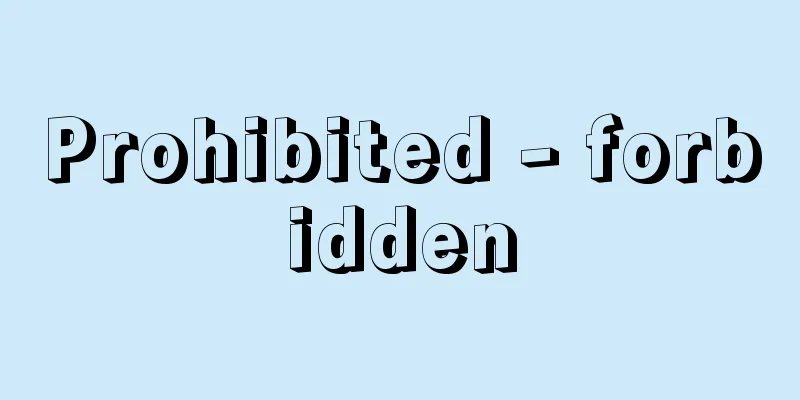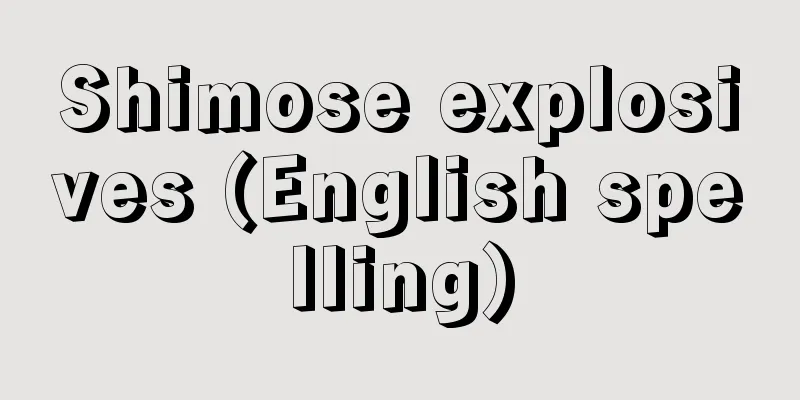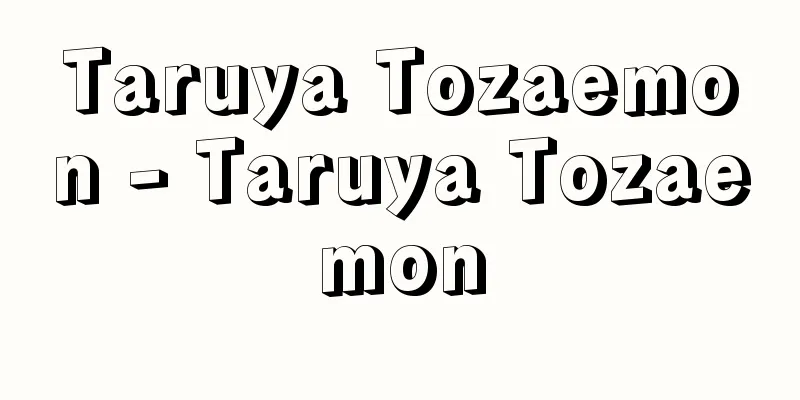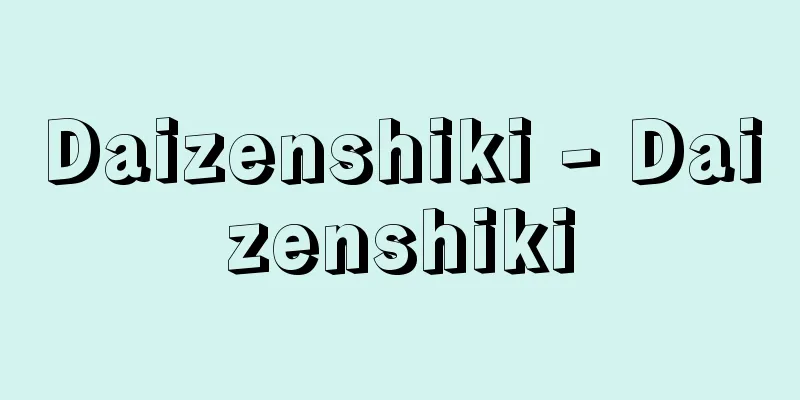Prohibited - forbidden

|
From the Kamakura period onwards, these were documents issued by the shogunate, feudal lords, local lords, etc. to inform temples, shrines, and various people of rules and prohibitions for the purpose of protecting and controlling them. They are also called ban slips, seifu, or seifu. There are two types of bans: those in power posted them in cities, towns, and villages for the purpose of notifying the general public, and those issued at the request of temples, shrines, cities, towns, and villages. Due to their nature, they were issued as wooden slips, and so they have been passed down in various places. The format was not consistent during the Kamakura period, but from the Muromachi period onwards, it became common for the first half of the ban to list the prohibited items, and the second half to state the punishments for violators. During the Sengoku period, the number of bans increased as temples, shrines, cities, towns, and villages sought protection from daimyo and local lords to protect themselves from fires and other disasters caused by war. The contents of the entries are wide-ranging, but for temples and shrines there are prohibitions on military disruption, setting camps, arson, and cutting down bamboo and trees, and there are also restrictions on the lifestyles of monks and priests. For cities and towns, there are many prohibitions on fighting, quarreling, disruption and violence, door-to-door selling and buying, and questioning by the government. For villages, there are many prohibitions on military disruption and unfair treatment of peasants. [Masaki Kubota] Source: Shogakukan Encyclopedia Nipponica About Encyclopedia Nipponica Information | Legend |
|
鎌倉期以降、幕府や大名・国人(こくじん)などが、寺社・諸人に対しその保護と統制を目的として、掟(おきて)や禁止事項などを通知するために出した文書。禁札、制札、制符ともいう。禁制には、権力者が広く一般に通知する目的で市町(いちまち)・村落に掲示する場合と、寺社・市町・村落の要請によって出される場合とがあり、その性質上、木札として出されたため各地に伝存する。形式については鎌倉期は一定しなかったが、室町期以降になると禁制の前半部分に禁止事項の箇条書、後半部分に違反者への処罰文言を記載するのが一般的となった。戦国期には寺社・市町・村落などが、兵火災害から自己を守るために大名・国人に保護を求めたため禁制が増加した。記載内容は多岐にわたるが、寺社には軍勢の乱妨(らんぼう)・陣取・放火・竹木伐採の禁止、僧衆・神職への生活規制、市町には喧嘩(けんか)口論、乱妨狼藉(ろうぜき)・押売押買・国質所質(くにじちところじち)などの禁止が多く、村落には軍勢の乱妨や百姓への不当行為などの禁止を示すものが多い。 [久保田昌希] 出典 小学館 日本大百科全書(ニッポニカ)日本大百科全書(ニッポニカ)について 情報 | 凡例 |
>>: Venus - Kinsei (English spelling)
Recommend
Silver Chick - Silver Chick
...Golden bamboo cv. Holochrysa is similar to the...
Kyosha Taku - Kyosha Taku
... According to the people of the Song Dynasty, ...
Hypopharynx
...the muscles of the pharynx work together to co...
Alemdar Mustafa Pasha
1750?-1808 Ottoman military officer and politician...
Medan - Medan (English spelling)
A city in the north of Sumatra, Indonesia. It is ...
Gyo (official rank) - Gyo
...However, this is not a strict system of offici...
Aphrodisiac - aphrodisiac
Rejuvenating drugs. Drugs that increase sexual des...
Prologue
The word prologue comes from the word prologos, w...
Carryback (English spelling)
In rugby, when a defending team takes the ball int...
Henri Pirenne
Belgian historian. Born in Verbier (December 23rd...
Dead Sea - Shikai (English spelling) Dead Sea
A salt lake on the border between Jordan and Isra...
Takashimaya Co., Ltd. - Takashimaya
In 1831, Iida Shinshichi founded Takashimaya, a co...
Baijiu (English name) (China)
A Chinese alcoholic beverage, a general term for ...
Good and bad intentions - Zeniakui
In legal terms, not knowing a certain situation is...
Rock foundation test
Bedrock is a broad base of rocks that exists at a ...









